- Shop
- Apparel
- Berries
- Books
- Bundles
- Citrus
- Fertilizer & Pest Control
- Fruiting Ground Covers
- Fruiting Shrubs
- Fruiting Trees
- Herbs, Spices, and Teas
- Mason Bees
- Nitrogen Fixers and Companion Plants
- Northwest Natives
- Nut Trees
- Ornamentals & More
- Perennial Vegetables
- Rootstock
- Subtropical Fruits
- Tools
- Vines
- Xeriscape
- Sale Items
- Information
- Nursery News
- Contact Us
- My Account
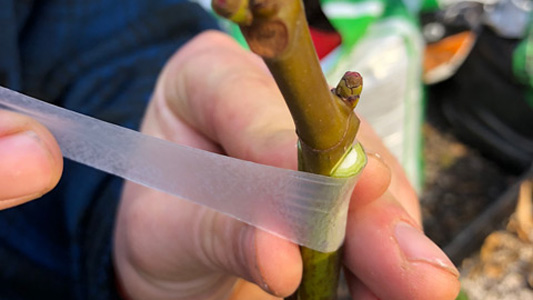
Propagating Figs by Grafting
Figs are one of the first plants many gardeners try to clone because of their notoriously quick and easy ability to be rooted from cuttings. And what could bring a gardener or homesteader more joy than propagating plants for free from ones that they already have?
Even though rooting figs has been done for eons, not many people ever try to graft their figs, mostly because it’s not necessary to graft onto another rootstock in order to get a sturdy, vigorous, disease resistant tree. We typically try to avoid grafting if it’s not necessary as it requires extra materials, labor and can create a weak point in the tree or suckering shoots from the rootstock. But there are a few situations where we’ve found it necessary.
One example is when we have a fig tree that we’d like to graft new varieties onto in order to create a multi-graft fig tree. Especially for folks who are limited on space having a multi-graft tree can be very valuable. Everybody who’s had a mature fig tree on their property knows how many figs one tree can produce in a summer so it’s often very desirable to have many different varieties on one tree in order to spread out the harvest time and diversify the different kind of figs you’ll be able to eat!
The other reason we graft figs and the reason we’re working on it right now in the greenhouses during the dead of winter, is to increase vigor on otherwise non-vigorous varieties. Some of the world’s tastiest and rarest varieties are unfortunately some of the least vigorous. Whether this is inherent to the variety or caused by stress, fig mosaic virus or being cut on too often is up for debate, but a sure fire way we’ve found to regain or instill vigor into these precious cuttings is to graft them onto our most vigorous varieties. Desert King, Emalyn’s Purple and most wild seedling figs posses exceptional vigor, and given the abundance of Desert King fig trees in the Northwest, we typically will use them as rootstock.
Grafting figs is fairly similar to grafting any other tree, the primary difference being that you have to account for their large spongy pith and exceptionally brittle wood. Whereas with most stone fruits and pome fruits you are allowed a great degree of flexibility from the wood and their especially thick cambium layer, with figs you have to fit them together like puzzle pieces so the wood doesn’t split.
Below we have what is basically a wedge graft but the only difference with figs is that we have to cut out the area in the rootstock where we will be fitting the scion.
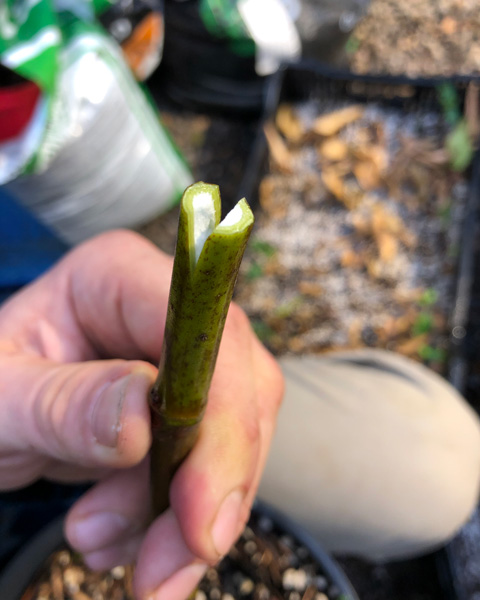
Then we cut our scion wood to match the size and angle of the cut made in the rootstock as best as possible.
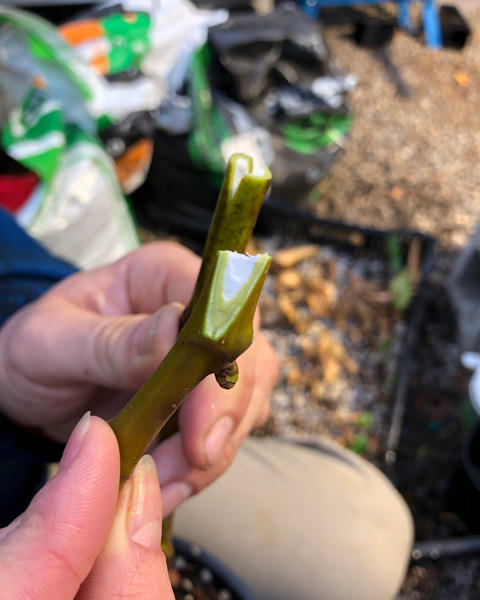
Then if all our cuts went according to plan we can fit them together like puzzle pieces.
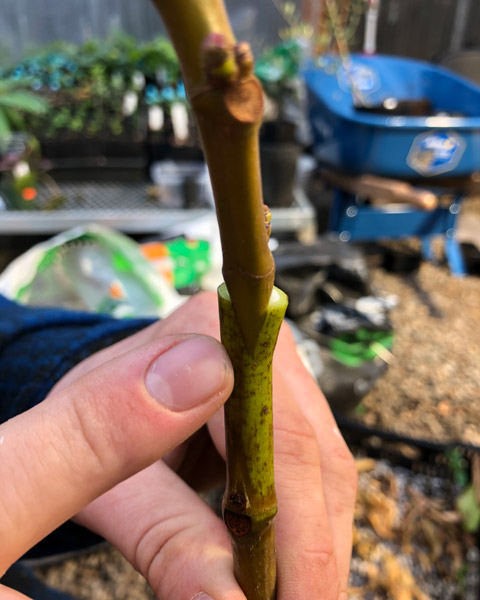
Then we wrap up the entire thing, the graft union as well as the entire piece of scion wood so that it doesn’t dry out.
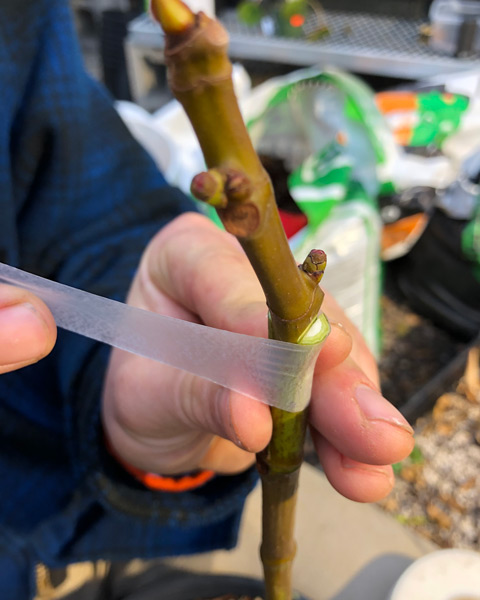
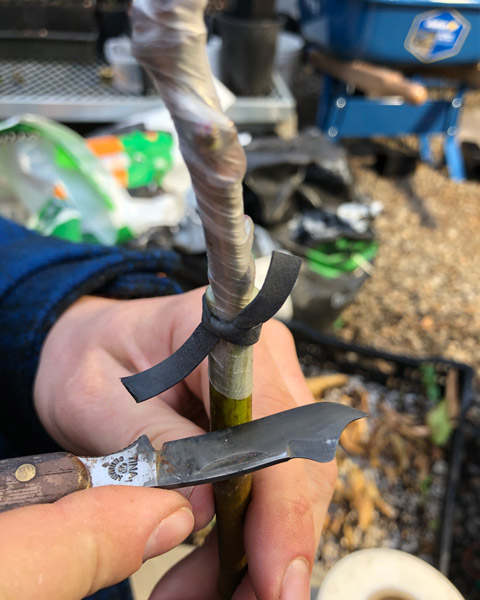
And for the final step make two slight cuts on either side of the rootstock beneath the graft to relieve the excessive pressure of the fig’s sap flow. Figs push so much sap so quickly that they can actually push the graft off without it connecting if you don’t make some cuts in it to relieve that pressure.
And voila! Ideally the graft takes and you have yourself a delicious Black Ischia or Black Madeira that actually has some vigor to it!
This same technique can be used for grafting new varieties onto your already existing tree. The only difference is we typically do it around April or May here in Portland so the figs are just starting to break dormancy and all danger of frost has passed. It’s best to create your multi grafts on younger trees so that they are not competing too much for light and can establish themselves into significant fig bearing branches.
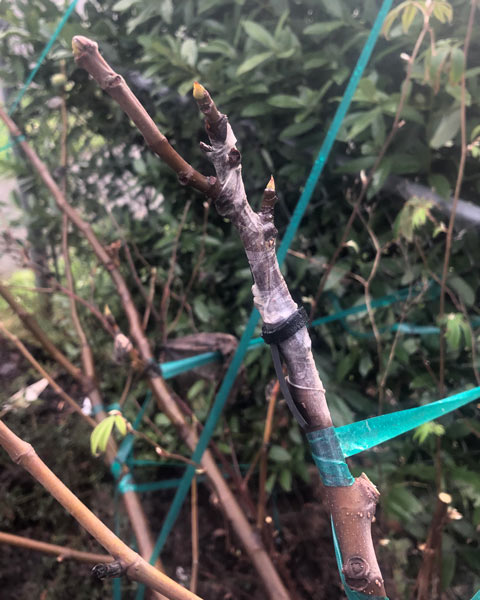
Thus far we’ve had very high take rates on greenhouse grafted as well as outdoor grafted figs. And who doesn’t love a tree with multiple varieties grafted onto it!? It really gets the neighborhood kids into horticulture. Or so we hope.
Below is a video of the entire process described above if seeing it live is more helpful for you.
